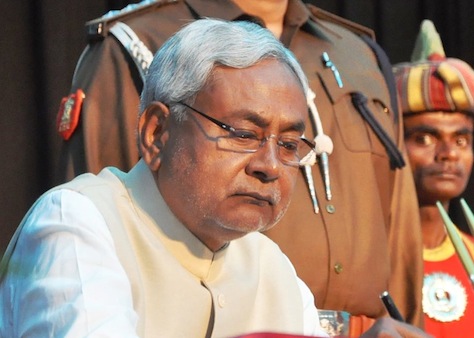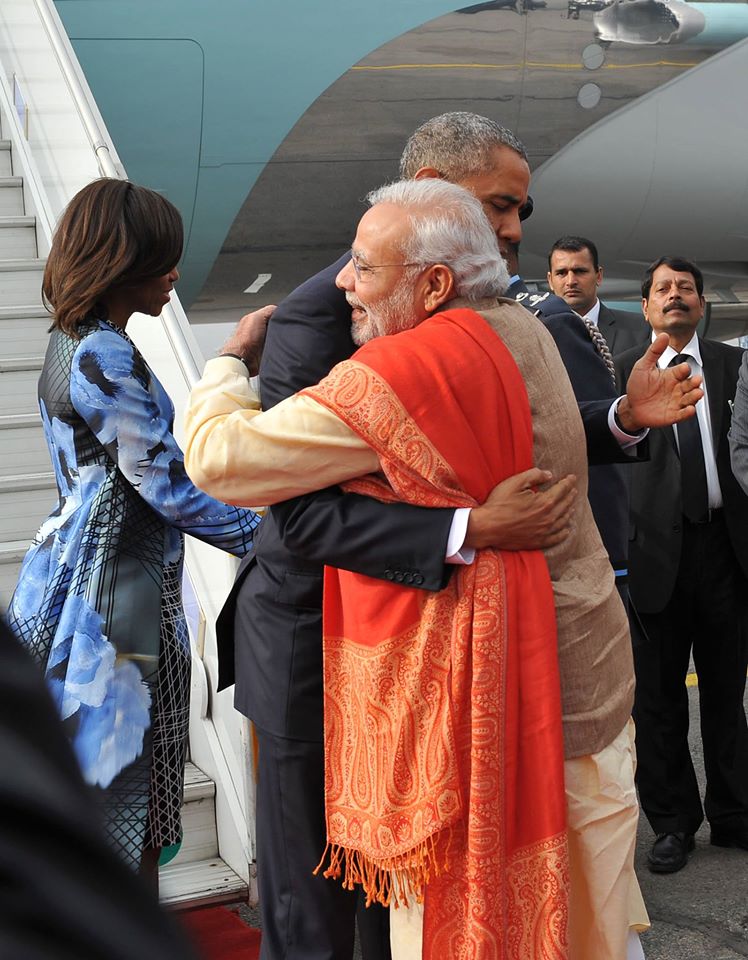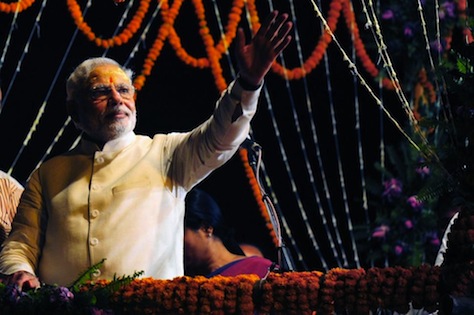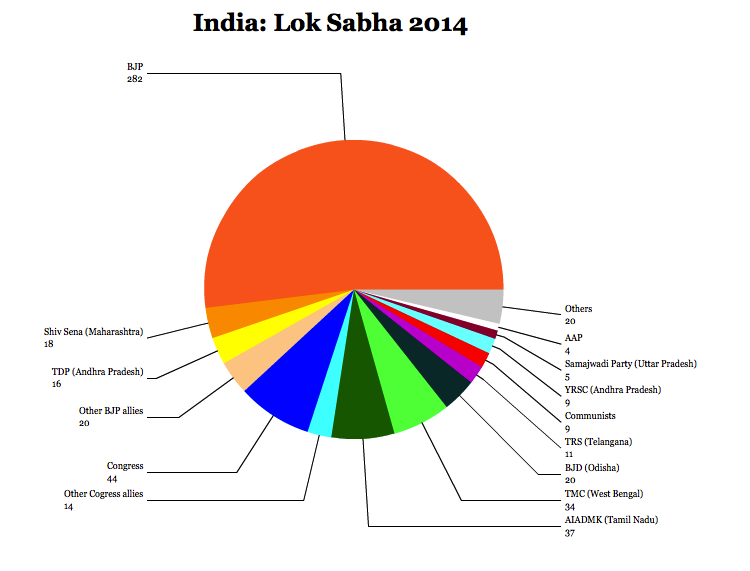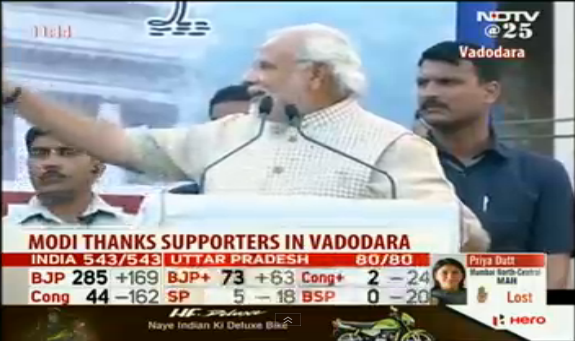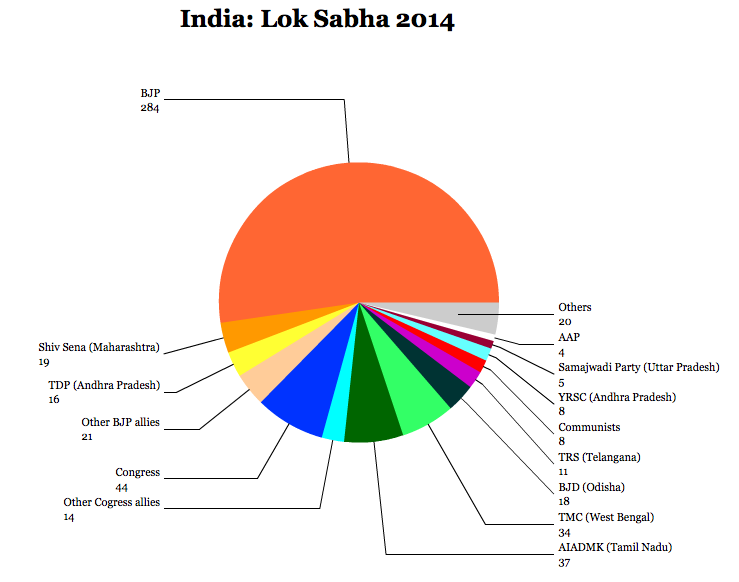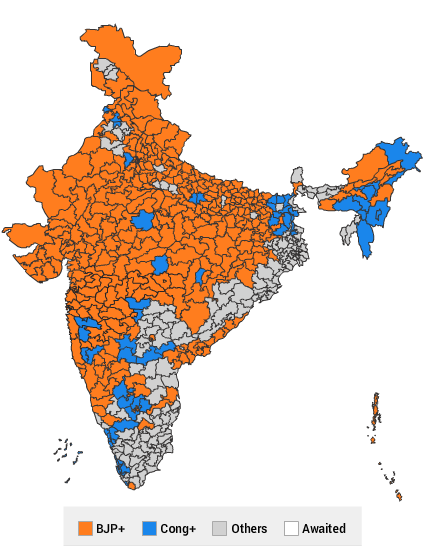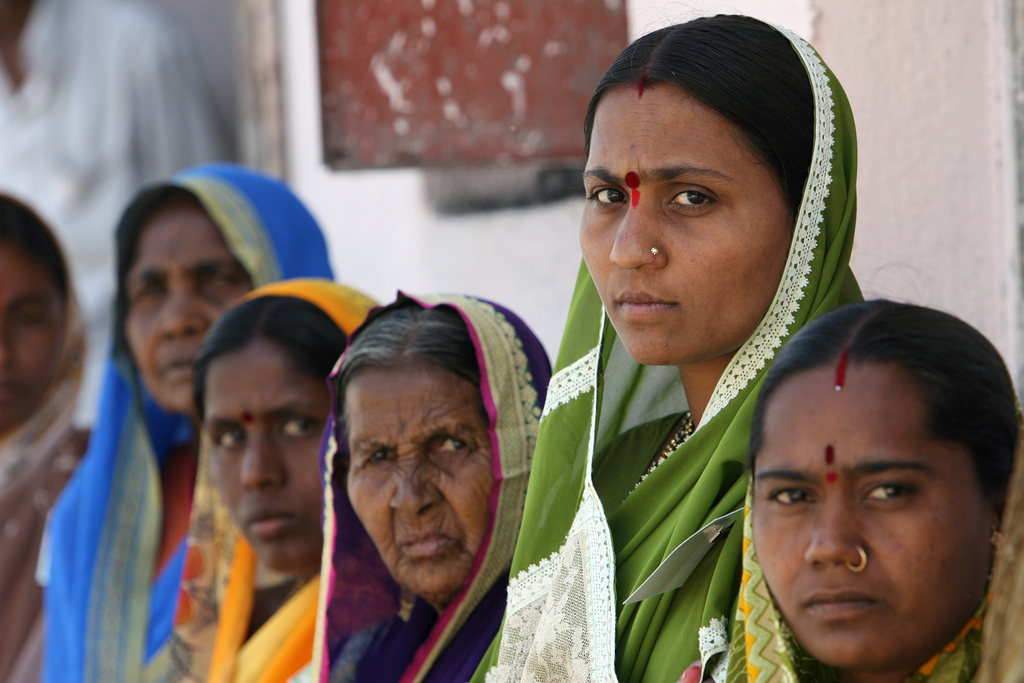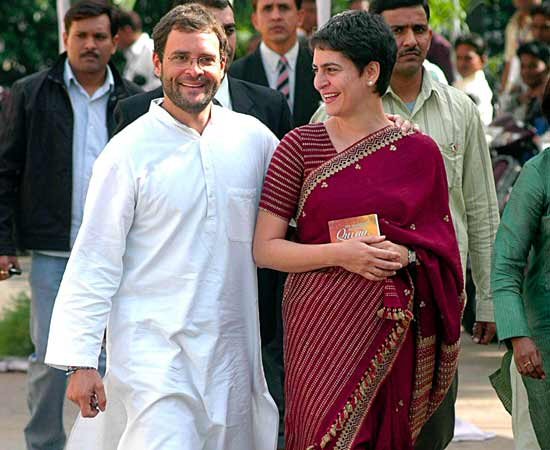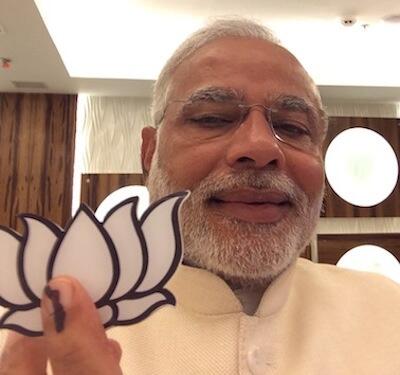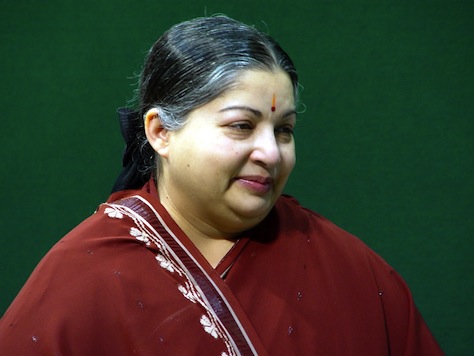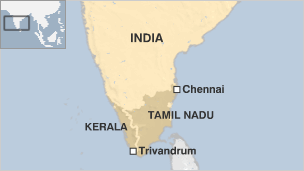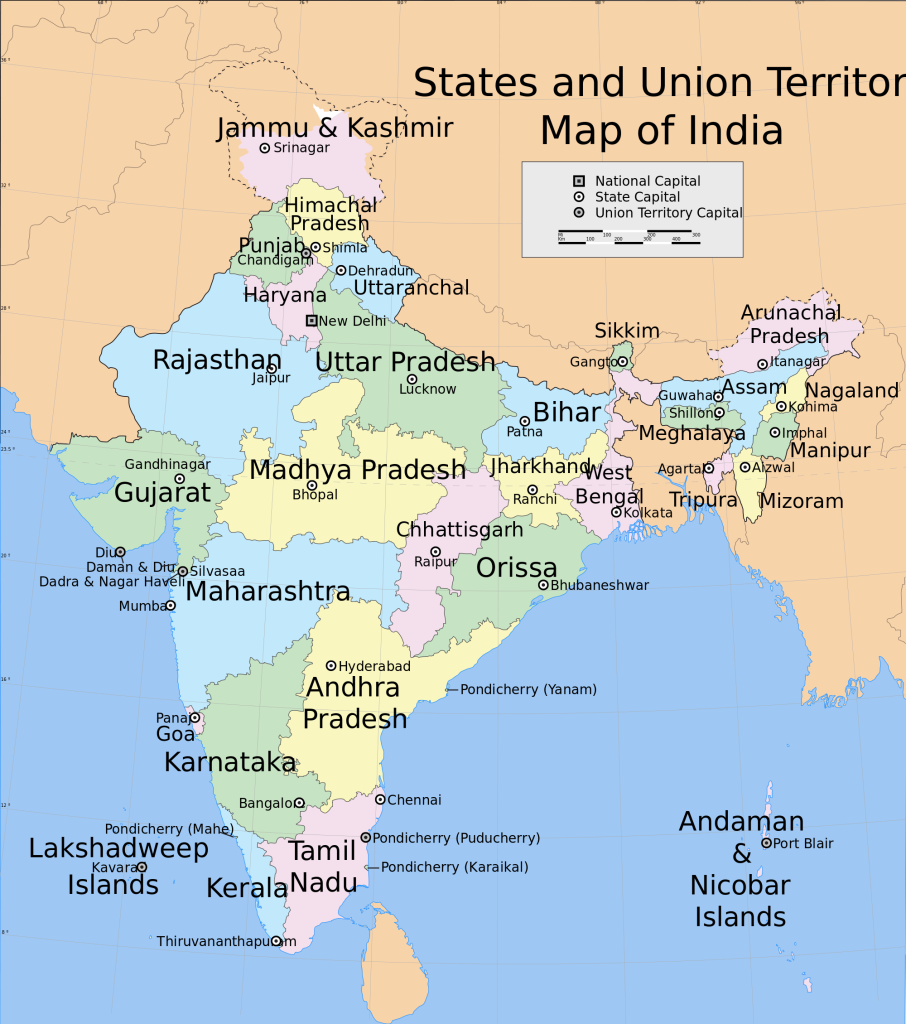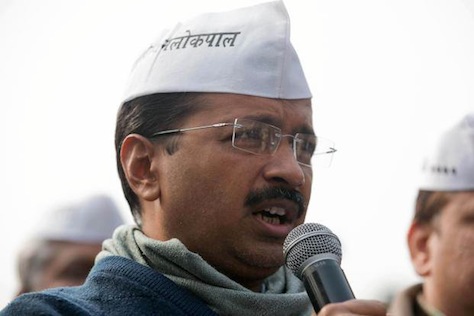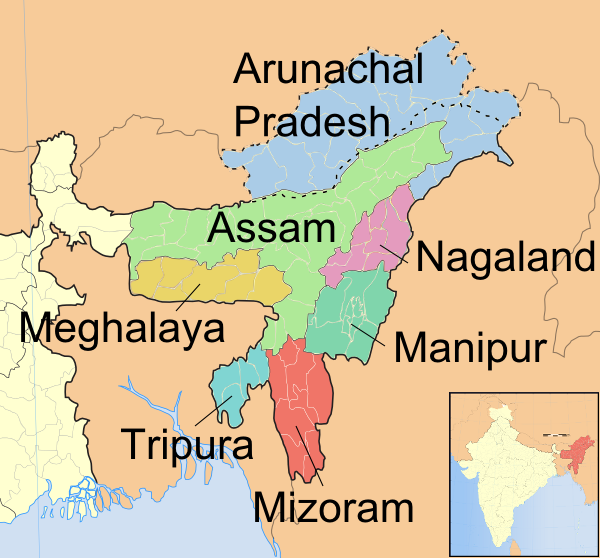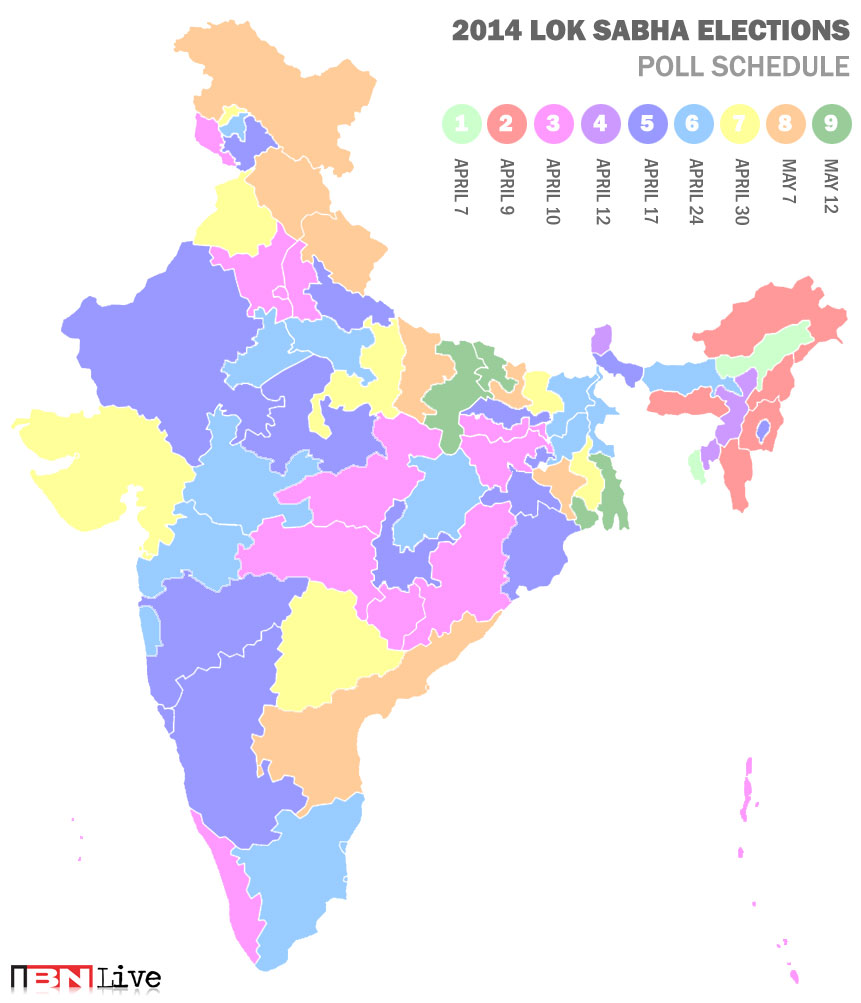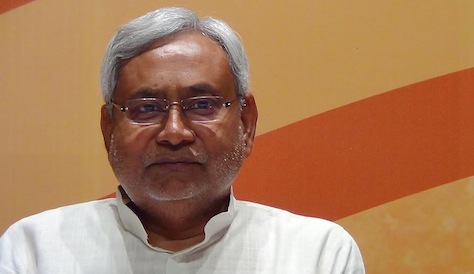Less than a year after his resignation in the wake of a strategic miscalculation, a break with India’s conservative, Hindu nationalist Bharatiya Janata Party (the BJP, or भारतीय जनता पार्टी) over its decision to anoint Narendra Modi, then the chief minister of Gujarat, as its prime ministerial candidate in 2014, Nitish Kumar is back as the chief minister of Bihar state.
It’s not every day that Patna, Bihar’s capital city, becomes the epicenter of Indian domestic politics. But the return of Kumar (pictured above) heralds the comeback of one of India’s most wily politicians, a potential national rival to Modi, and one of the most capable policymakers in India today. It’s no exaggeration to say that Kumar’s ‘Bihari model’ is in some ways superior to Modi’s ‘Gujarati model’ when you look at the development gains that Bihar state made under Kumar’s nearly decade-long tenure as chief minister from 2005 to 2014.
Kumar’s return comes no less than nine months before regional elections are due in Bihar, one of India’s most important states that will now be shaped widely as a standoff between Kumar and Modi.
With nearly 104 million people, it’s India’s third most populous state. Bordering Bangladesh on its far eastern corner, Bihar has a predominantly Hindi-speaking, Hindu-practicing population. But 16.5% of the population consists of practicing Muslims, making it an especially diverse state in terms of religion.
Don’t underestimate how important the state is — and how important its further development could become. Bihar is home to more people than the entire country of The Philippines or Vietnam or Egypt, and it’s only at the beginning of what could be a longer trajectory of rising economic growth.
For now, Kumar is taking a gentle stand with respect to Modi, pledging to work with India’s new prime minister for Bihar’s benefit. But Kumar will not be renewing a one-time alliance between the BJP and Kumar’s own party, the Janata Dal (United) (JD(U), जनता दल (यूनाइटेड)).
Once a leading player in the BJP-dominated National Democratic Alliance (NDA), Kumar pulled the JD(U) out of its alliance with the BJP when it became clear that Modi would lead the alliance through the 2014 elections. That was a difficult proposition for Kumar, whose party attracts a significant share of votes among Bihar’s Muslim population. Modi’s reputation among Muslim Indians remains fraught, in no small part over Hindu reprisals for the burning of a train of Hindu pilgrims. Those riots, which took place in 2002 in the first months of Modi’s tenure as Gujarat’s chief minister, led to the deaths of nearly 1,000 Muslims. Critics argued that Kumar, instead, wanted to be the BJP-led alliance’s candidate in his own right, and observers point to long-standing antipathy between Modi and Kumar, as veteran writer Sankarshan Thakur writes in The Telegraph:
The two men have duelled infamously on the national stage and the prickly needle between them became the sole cause of the collapse of the JDU-BJP alliance in Bihar and the crises that have dogged the state to this day. The Modi juggernaut had decimated Nitish in the 2014 Lok Sabha polls and caused him to resign. Nitish has displayed a near-pathological aversion to Modi, refusing even to bring the Prime Minister’s name to his lip. His return as chief minister raises the charming prospect of the two men having to come face to face and engage as leader of nation and state.
Bihar’s regional elections, due before November, will be the most important political test for Modi’s strength since his election last year. The BJP’s recent loss in regional elections in the National Capital Territory of Delhi to the anti-corruption Arvind Kejriwal must certainly give Kumar hope that he, too, can unlock the means to defeating Modi. For their part, the BJP, under the leadership of former Gujarati minister Amit Shah, will pull no punches in its attempt to wrest Bihar away from Kumar, giving it a key foothold in northeastern India. If Modi and the BJP succeed in Bihar, they will have a credible shot at winning 2016’s elections in West Bengal — the fourth-most populous state in India and, like Bihar, both much more Muslim and much poorer than the rest of India. Continue reading Nitish Kumar returns to front-line Indian politics
